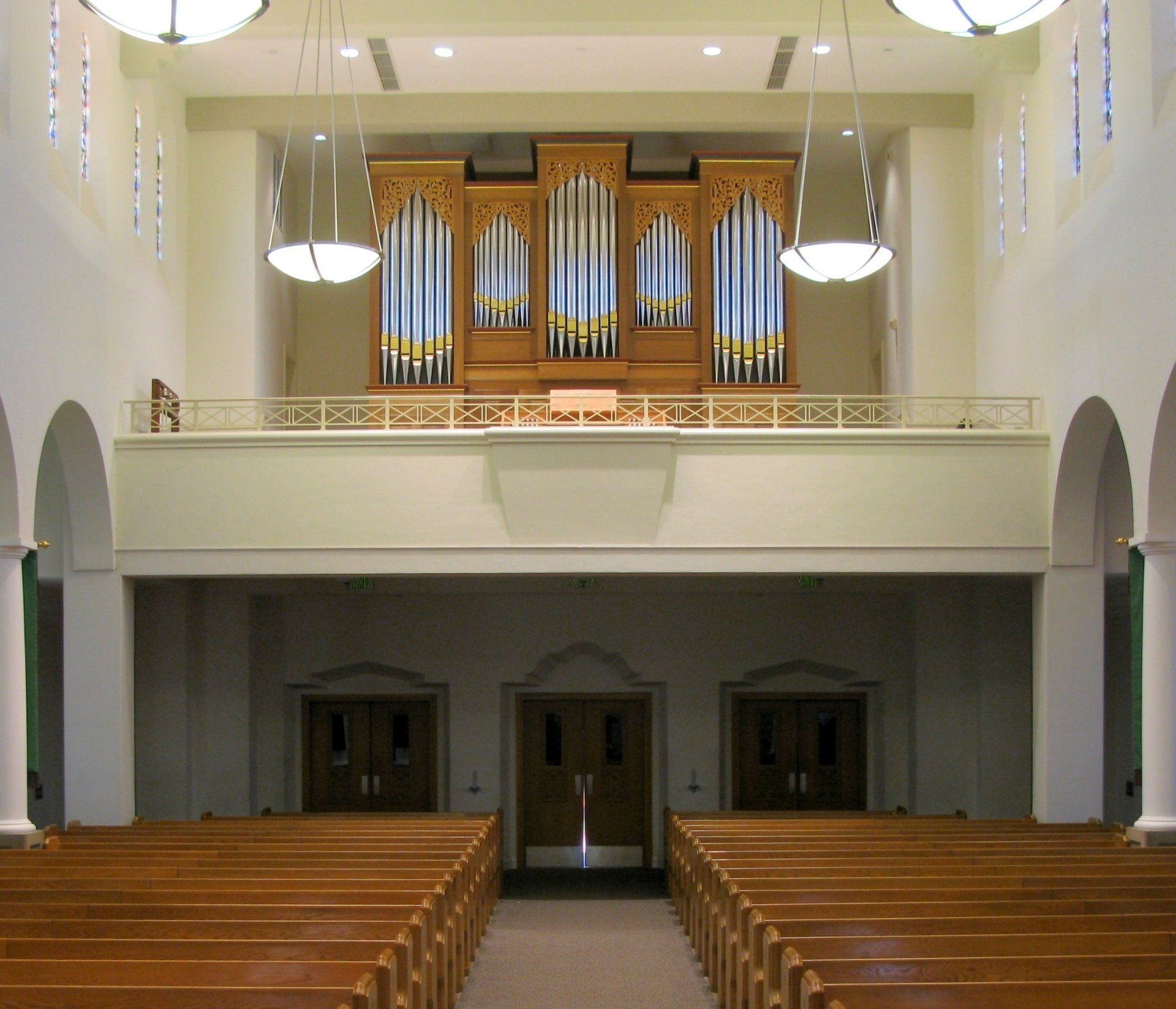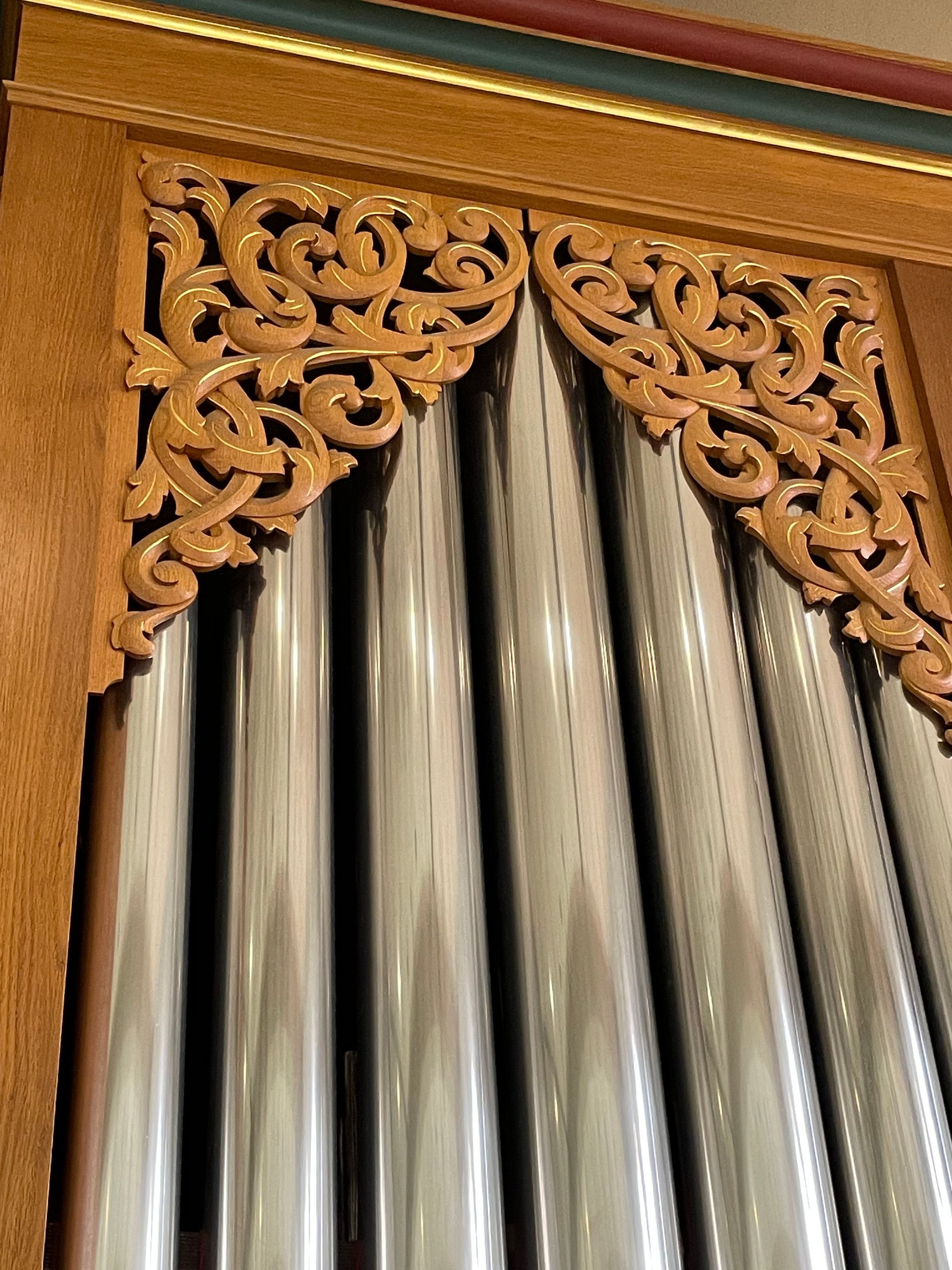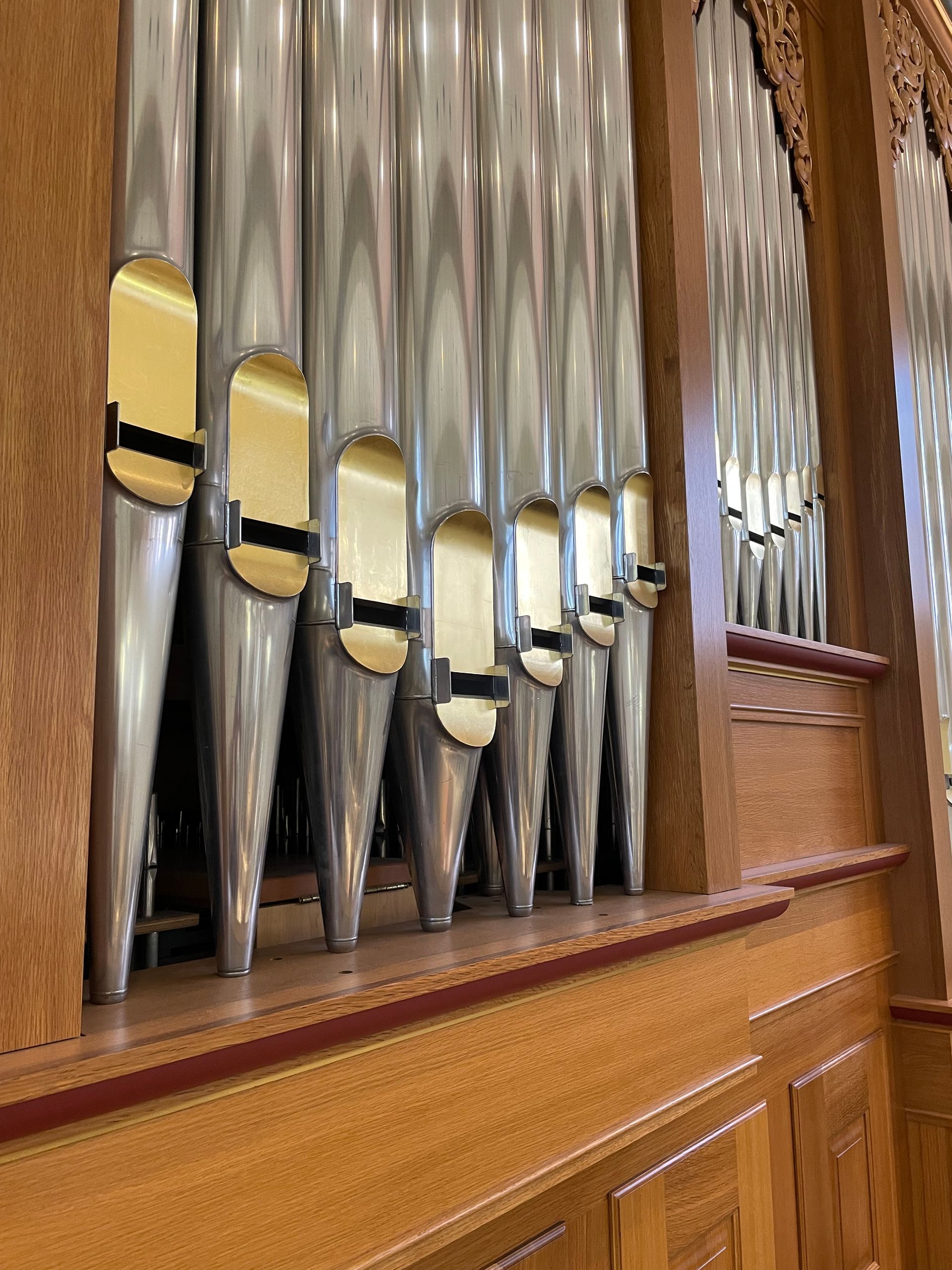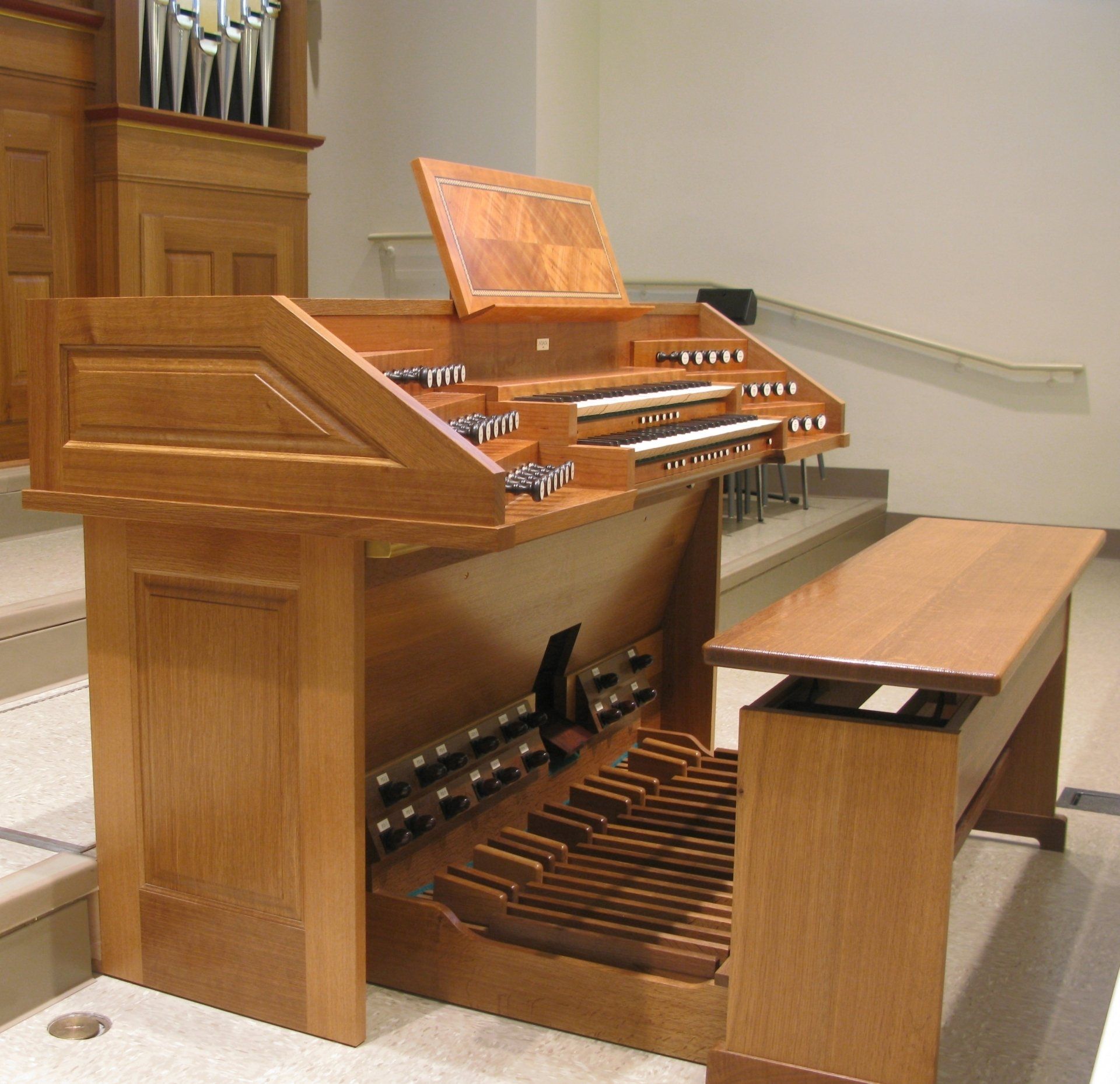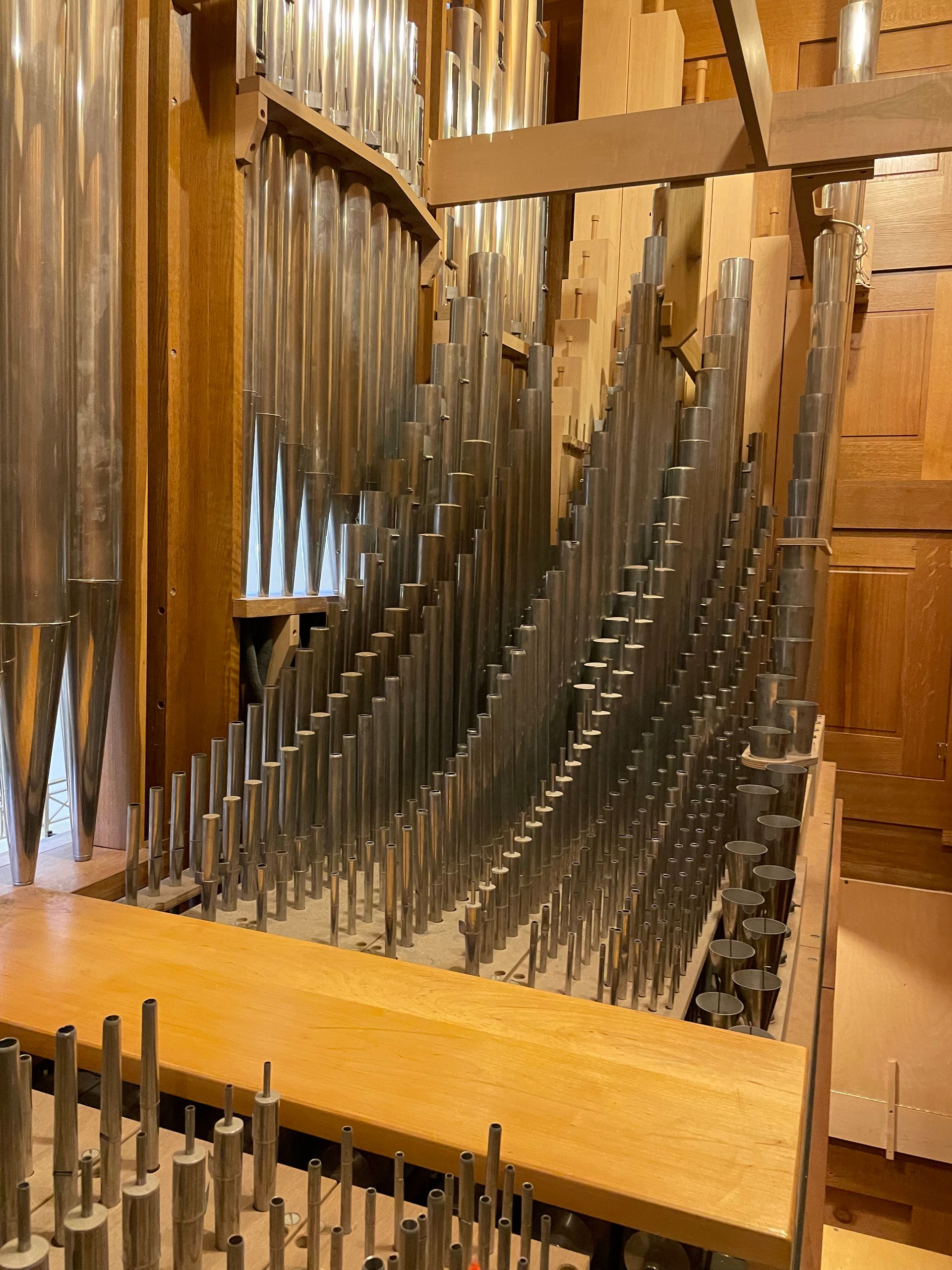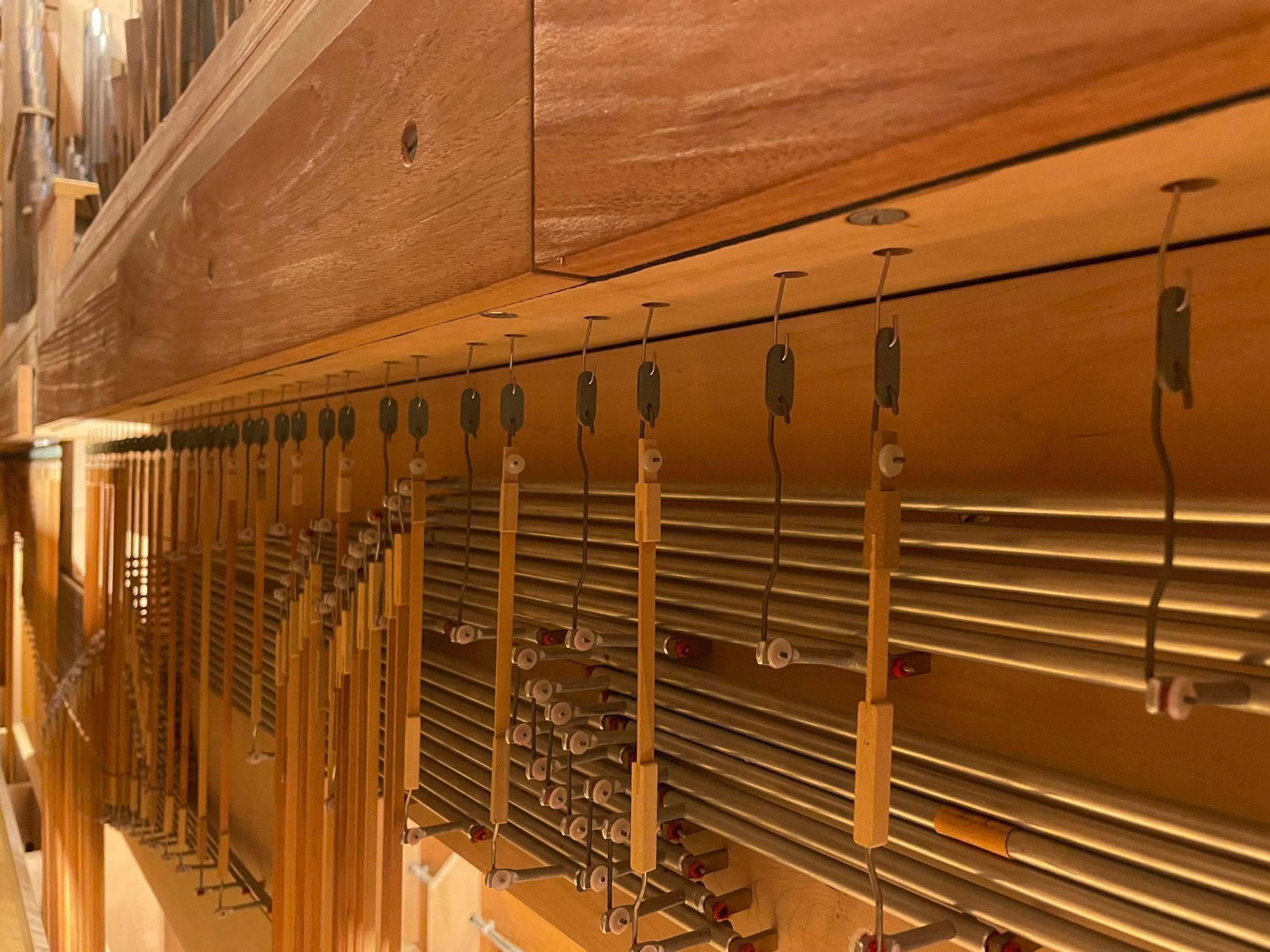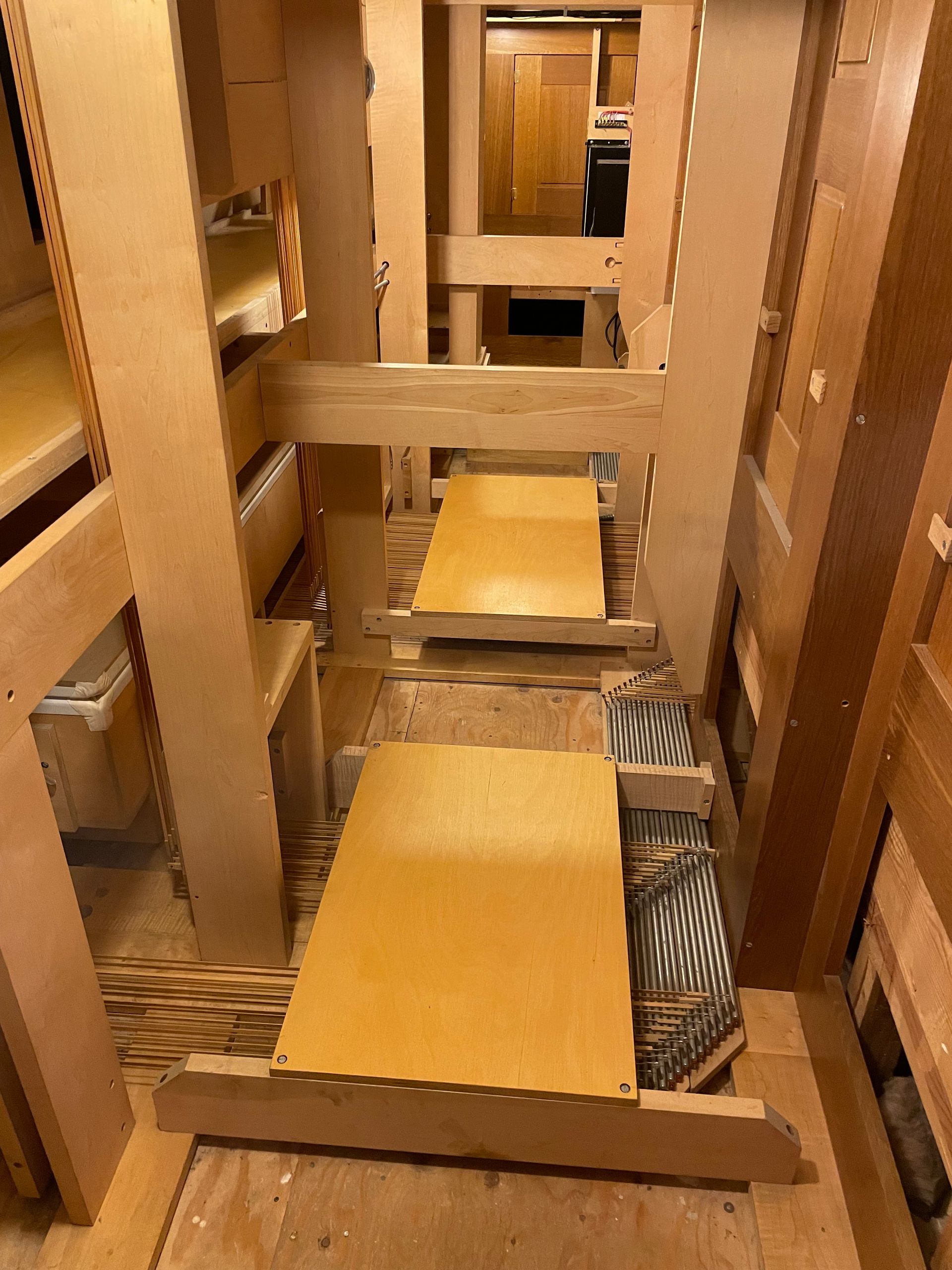Opus #151
In November of 2008, Opus #151 by the Noack Organ Company, was installed. Voicing of the pipework was done during January of 2009, and a liturgy for blessing the organ held on Saturday, February 21, 2009.Designed by Fritz Noack in collaboration with our music director, the instrument was built by the craftsmen of the Noack Company at their shop in Georgetown, MA.
After the entire organ was constructed, it was dismantled for shipment by moving van, unloaded at the church by the builders and parishioners, spread throughout the body of the worship space, and within a week began reassembly in the choir loft.
While the instrument includes use of contemporary materials, the basic philosophy of this organ has roots in earlier centuries, such as the windchests and mechanical action it uses. Each manual and pedal key has a purely mechanical linkage with the pallet (valve) that admits air to the pipes.
The windchests and key action create a more musical and reliable instrument than other types of construction. For instance, the player has some control over how fast the pallets (valves) open and close, allowing for more nuance in how the pipes speak. The winding system allows some flexibility to the "breath" of the organ, and the tuning system (temperament) gives a different "color" to the various key signatures.
Organs were built in this fashion for centuries until the advent of electricity made mechanical action "obsolete." The return to using mechanical action began in the 1920's when people such as Albert Schweitzer became interested in the organs played by Bach and his contemporaries.
This "Organ Reform Movement" slowly gained momentum in Europe as the predominant way of organ building before taking hold in North America. Tonally, our instrument finds its heritage in historic European organs, and the best builders of early 19th Century America.
The console (keydesk), and the casework that contains the pipes, are made of fumed white oak. Fuming is a process that brings out a natural darker color when the raw wood is placed in an air-tight “tent” with a mixture containing ammonia. The wood that holds the keyboards and stopknobs is cherry; the stop-knobs that control what sounds the organist draws upon are made of ebony as are the sharps/flats of the keyboard.
The “natural” keys are made from cowbone, as are the nameplates of the stops. The pipes are made from either metal or wood, and the front (façade) pipes have gold leaf around the “mouths” that create the initial sound of the pipes. The carved “pipe shades” around the top of the façade pipes are delicately ornamented with gold paint.
ORGAN SPECIFICATIONS
Great (58 notes)
Bourdon 16'
Diapason 8'
Chimney Flute 8'
Spire Flute 8' (1-12 Ch Fl)
Octave 4'
Harmonic Flute 4'
Twelfth 2 2/3'
Fifteenth 2'
Seventeenth 1 3/5'
Mixture IV 1 1/3'
Trumpet 8'
Swell (58 notes, enclosed)
Viola 8'
Celeste 8' (from A)
Stopt Flute 8'
Principal 4'
Recorder 4'
Gemshorn 2'
Larigot 1 1/3'
Cornet II (from f°)
Mixture III 2'
Cremona 8'
Oboe 8'
Pedal (30 notes)
Stopt Bass 16'
Bourdon 16' (from Great)
Open Bass 8'
Gedackt 8' (18 pipes from Great)
Octave 4' (12 pipes from Great)
Trombone 16'
Trumpet 8' (from Great)
Swell to Great, Great to Pedal, Swell to Pedal, Cymbal Bells, Tremulant, Valotti Temperament, Flexible Winding, Straight/Concaved Pedalboard, Detached Console, Mechanical Key Action,
Electric Stop Action with 256 Levels of Memory plus Sequencing, Bluetooth for iPad Page Turns
Technical/tonal enhancements provided by Rosales Organ Builders, changes to Swell Reeds & 16’ Trombone provided by Gober Organs, further upgrades/enhancements by the current Noack Organ Company.
